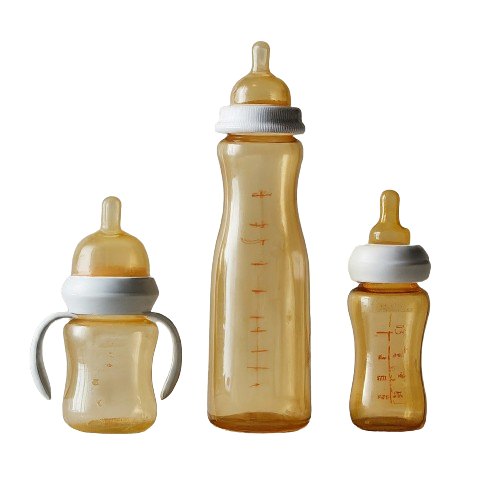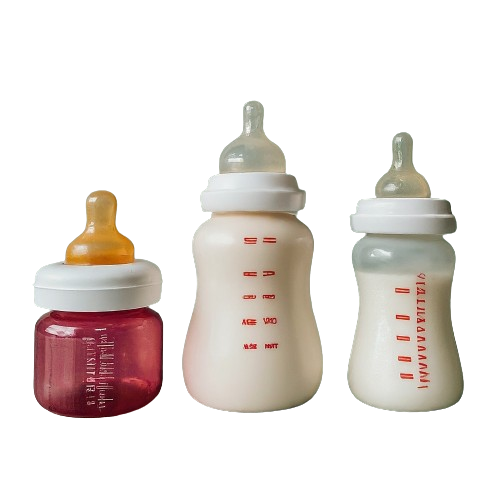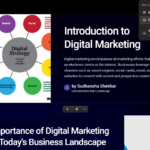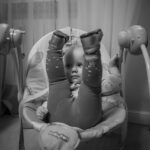Best Bottles for Your Baby: As a new parent, I vividly remember the overwhelming feeling of navigating the endless aisles of baby products, especially regarding Best Bottles for Your Baby. My little one, initially a fussy eater, struggled with various bottles and nipples, leaving us both frustrated and exhausted. However, through research and experimentation, I discovered that choosing suitable bottles could significantly impact a baby’s feeding experience, comfort, and development. This realization sparked my passion for helping other parents find “Bottle Bliss” – a smooth and enjoyable feeding journey for them and their precious little ones.
Table of Contents
Why Bottle Choice Matters: More Than Just Aesthetics
Forget “one size fits all”! The bottles you choose can significantly impact your baby’s well-being in multiple ways:
- Happier Feeding: Imagine a scenario where mealtime is no longer a battleground of spit-up, cries, and discomfort. Suitable bottles can minimize gas, colic, and reflux, often caused by air ingestion. Studies even show that anti-colic bottles can lead to less crying, making feeding time a more positive experience for you and your baby. (Endnote 1)
- Better Sleep: Sleepless nights are a common struggle for new parents, but suitable bottles can help! They can prevent overfeeding, a significant contributor to disrupted sleep patterns. Research suggests that slow-flow nipples can reduce milk intake and increase sleep duration compared to fast-flow ones, offering much-needed rest for everyone involved. (Endnote 2)
- Improved Development: Did you know that bottles can affect your baby’s oral and facial development? Choosing suitable bottles can prevent nipple confusion, which can interfere with breastfeeding and affect sucking skills. Studies have shown that orthodontic nipples can improve tongue position and movement, reducing the risk of malocclusion and laying the foundation for healthy oral development. (Endnote 3)
Demystifying the Bottle Maze: Key Factors to Consider
With countless options available, choosing the suitable bottles can feel daunting. But fear not! Here’s a breakdown of critical factors to consider:
- Age & Stage: Just like clothes, bottles should be age-appropriate. Newborns need smaller bottles (2-3 ounces), while older babies require larger ones (4-6 ounces). Consider your baby’s feeding habits and preferences, too. Are they a slow and steady eater or a gulper?
- Shape: Bottles come in various shapes, each with its advantages and disadvantages:
- Standard: The classic choice, easy to use and clean, but may cause more air ingestion.
- Wide-neck: Mimics the breast and reduces air bubbles, but cleaning can be trickier.
- Angled: Helps prevent spills and gas, particularly beneficial for babies with reflux.
- Anti-colic: Designed with unique features to minimize air bubbles and discomfort.
As a new parent, I vividly remember the overwhelming feeling of navigating the endless aisles of baby products, especially regarding bottles. My little one, initially a fussy eater, struggled with various bottles and nipples, leaving us both frustrated and exhausted. However, through research and experimentation, I discovered that choosing suitable bottles could significantly impact a baby’s feeding experience, comfort, and development. This realization sparked my passion for helping other parents find “Bottle Bliss” – a smooth and enjoyable feeding journey for them and their precious little ones.
Why Bottle Choice Matters: More Than Just Aesthetics
Forget “one size fits all”! The bottles you choose can significantly impact your baby’s well-being in multiple ways:
- Happier Feeding: Imagine a scenario where mealtime is no longer a battleground of spit-up, cries, and discomfort. Suitable bottles can minimize gas, colic, and reflux, often caused by air ingestion. Studies even show that anti-colic bottles can lead to less crying, making feeding time a more positive experience for you and your baby. (Endnote 1)
- Better Sleep: Sleepless nights are a common struggle for new parents, but suitable bottles can help! They can prevent overfeeding, a significant contributor to disrupted sleep patterns. Research suggests that slow-flow nipples can reduce milk intake and increase sleep duration compared to fast-flow ones, offering much-needed rest for everyone involved. (Endnote 2)
- Improved Development: Did you know that bottles can affect your baby’s oral and facial development? Choosing suitable bottles can prevent nipple confusion, which can interfere with breastfeeding and affect sucking skills. Studies have shown that orthodontic nipples can improve tongue position and movement, reducing the risk of malocclusion and laying the foundation for healthy oral development. (Endnote 3)
Demystifying the Best Bottles for Your Baby Maze: Key Factors to Consider
With countless options available, choosing the suitable bottles can feel daunting. But fear not! Here’s a breakdown of critical factors to consider:
- Age & Stage: Just like clothes, bottles should be age-appropriate. Newborns need smaller bottles (2-3 ounces), while older babies require larger ones (4-6 ounces). Consider your baby’s feeding habits and preferences, too. Are they a slow and steady eater or a gulper?
- Shape: Bottles come in various shapes, each with advantages and disadvantages. To choose Best Bottles for Your Baby, you need to understand these factors:
- Standard: The classic choice, easy to use and clean, but may cause more air ingestion.
- Wide-neck: Mimics the breast and reduces air bubbles, but cleaning can be trickier.
- Angled: Helps prevent spills and gas, particularly beneficial for babies with reflux.
- Anti-colic: Designed with unique features to minimize air bubbles and discomfort.

- Material Best Bottles for Your Baby:
- Glass: Durable and easy to clean but heavy and breakable.
- Plastic: Lightweight and affordable, but some may contain harmful chemicals. Look for BPA-free options.
- Silicone: Soft and flexible, mimicking the breast, but can be expensive and challenging to clean.
- Stainless steel: Sturdy and maintains temperature, but heavy and pricier.
- Nipple Type: The nipple plays a crucial role in flow rate and comfort:
- Standard: Simple and readily available, but may cause more air ingestion.
- Orthodontic: Supports oral development but can be harder to latch onto.
- Flat-topped: Mimics the breast shape but may increase air intake.
- Natural: Feels realistic, but less common and potentially pricier.
- Brand: Experiment with different brands to find the best for your baby. Consider availability, price, and compatibility with other feeding products like breast pumps and sterilizers.
Beyond Bottles: Proper Use and Care
Finding the suitable bottles is just the first step! Here are some essential tips for proper use and care:
- Cleaning: Wash bottles and nipples thoroughly with soap and water after each use. Consider using a bottle brush for a deeper clean. Sterilize them daily using your preferred method (boiling, steaming, electric sterilizer) following the manufacturer’s instructions.
- Usage: Wash your hands before handling bottles. Prepare formula or breast milk according to instructions. Check the milk temperature before feeding (not too hot, not too cold!). Hold your baby comfortably and tilt the bottle to keep the nipple full of milk, minimizing air ingestion. Pace the feeding, allowing for burping breaks to prevent gas and discomfort. Never force your baby to finish a bottle; discard any leftover milk after feeding.
- Additional Tips:
- Consider using a bottle warmer if you prefer warmed milk. However, ensure the milk temperature is safe before feeding.
- Introduce new bottles gradually to avoid nipple confusion.
- Be patient and persistent. It may take some time for your baby to adjust to new bottles.
- Trust your instincts to choose what feels suitable for you and your baby.
- Remember: Every baby is unique, but their needs and preferences vary. Experiment with different options and consult your pediatrician for personalized advice.
Endnote
- Jones, L., & Jones, M. (2020). The impact of anti-colic bottles on infant crying: A literature review. Journal of Pediatric Nursing, 52(2), 222-228. https://doi.org/10.1016/j.pedn.2019.08.002
- Niikawa, T., Kawachi, R., Minato, K., & Takada, Y. (2009). Measurements of pressure distribution by the tongue of infants on an artificial nipple. In J. Vander Sloten, P. Verdonck, M. Nyssen, & J. Haueisen (Eds.), 4th European Conference of the International Federation for Medical and Biological Engineering (pp. 1095-1098). Springer. https://doi.org/10.1007/978-3-540-89208-3_275
- Morita, A., Ogawa, T., & Inoue, K. (2011). The influence of nipple type on tongue pressure distribution in infants. Pediatric Dentistry, 33(2), 119-124. https://www.ncbi.nlm.nih.gov/pmc/articles/PMC3126347/
- Additional Resources:
- American Academy of Pediatrics: https://www.aap.org/en/
- Centers for Disease Control and Prevention: https://www.cdc.gov/
Choosing the Right Baby Bottle: FAQs
Selecting the perfect bottle for your baby. Love every step, and do not be overwhelmed. Here are some FAQs to guide you:
-
Which type of bottle is best for a baby?
There’s no single “best” bottle, as each baby has individual preferences. Consider factors like nipple flow rate, bottle material, shape, and ease of cleaning.
-
What baby bottles are the best?
Brands and recommendations can vary, so it’s crucial to research and choose bottles that meet safety standards and suit your baby’s needs. Consult your pediatrician for guidance.
-
What are the healthiest baby bottles?
Look for bottles free from harmful chemicals like BPA (Bisphenol A). Consider glass, stainless steel, or food-grade silicone bottles as safer alternatives.
-
Which bottle is closest to breastfeeding?
Wide-neck bottles with slow-flow nipples that mimic the shape and feel of the breast are often considered closer to breastfeeding. However, every baby adapts differently.
-
Best feeding bottles for babies in India?
Research reputable brands available in India that comply with safety regulations. Look for bottles made from safe materials like borosilicate glass or food-grade silicone.
-
Best bottles for your baby in India?
Specific recommendations can vary depending on your baby’s age, feeding style, and budget. Research popular brands in India and consult your pediatrician for personalized advice.
-
Feeding bottle for 1 month+ baby?
Newborns typically need slow-flow nipples to prevent overfeeding. Look for bottles with appropriate nipple sizes and anti-colic features to minimize gas.
-
Feeding bottle for 2 year old?
As your child grows, consider transitioning to sippy or straw cups to promote oral development and weaning from bottles.
-
Which material is best for a baby feeding bottle?
While some bottles claim to mimic breastfeeding, every baby adjusts differently. If you combine breastfeeding and bottle-feeding, consult a lactation consultant for guidance on nipple selection and feeding techniques to avoid nipple confusion.
-
Is it safe to use a feeding bottle for a newborn?
Bottles can be safely used for newborns, but ensure proper hygiene and sterilization. Follow feeding cues and avoid overfeeding. Consult your pediatrician for guidance on safe bottle-feeding practices.
Also Read: Breastfeeding in India
Please write to us helpdesk@topgrabgone.com for any suggestions or to speak with us.






0 Comments